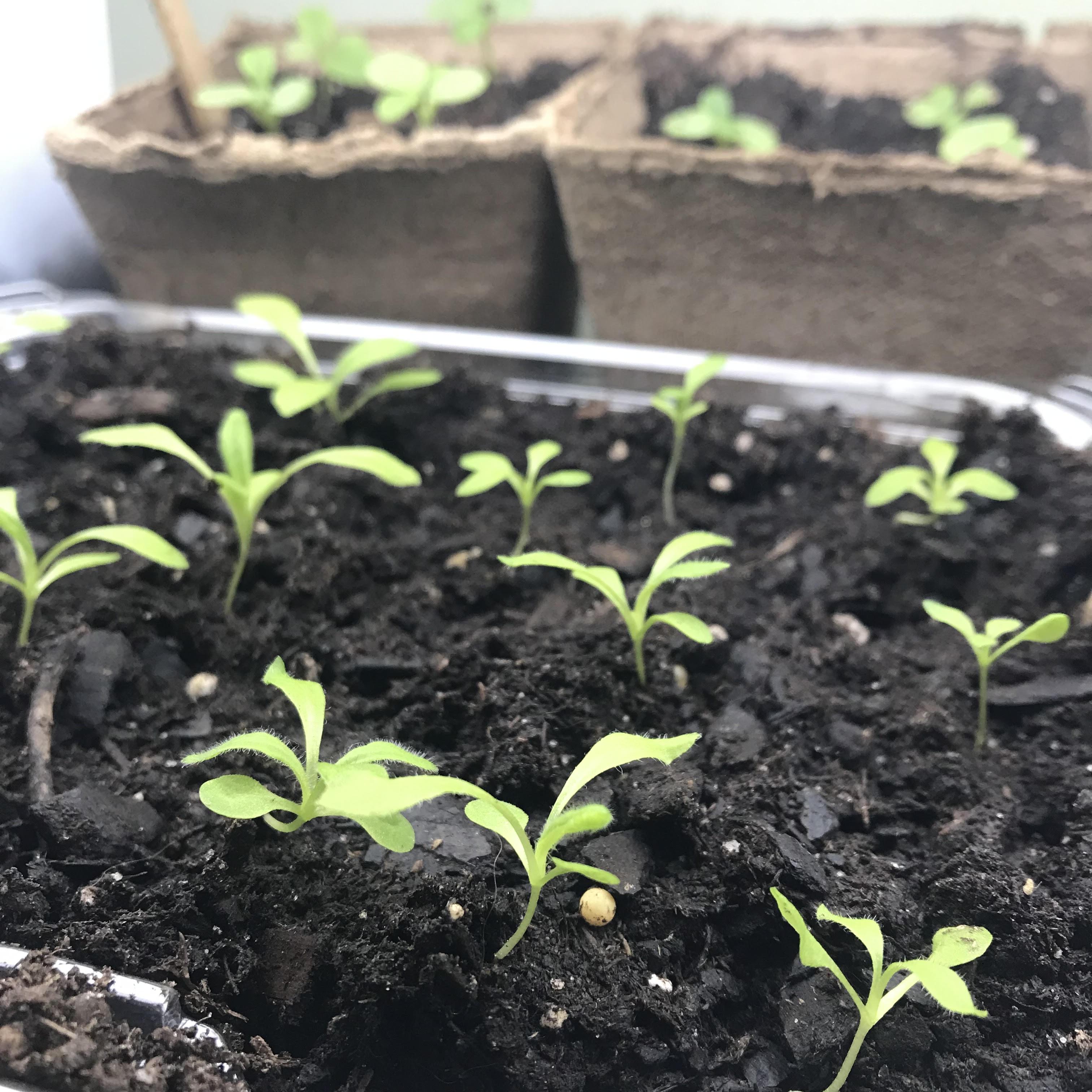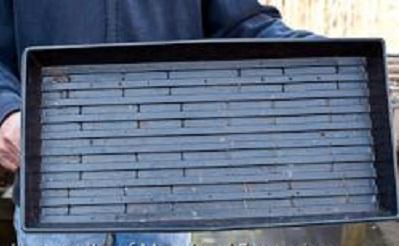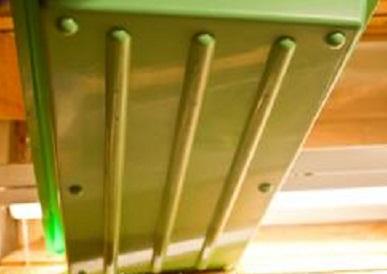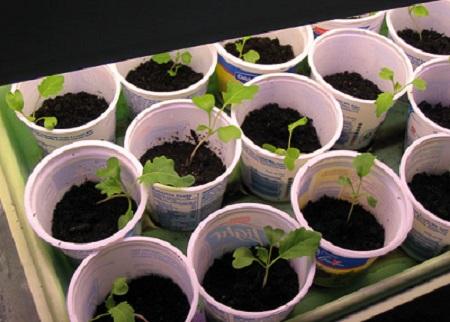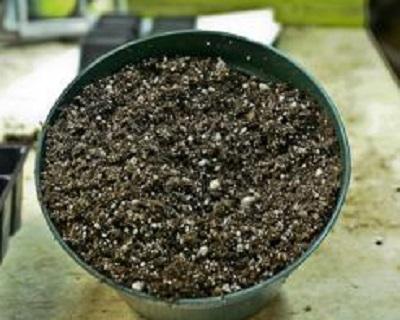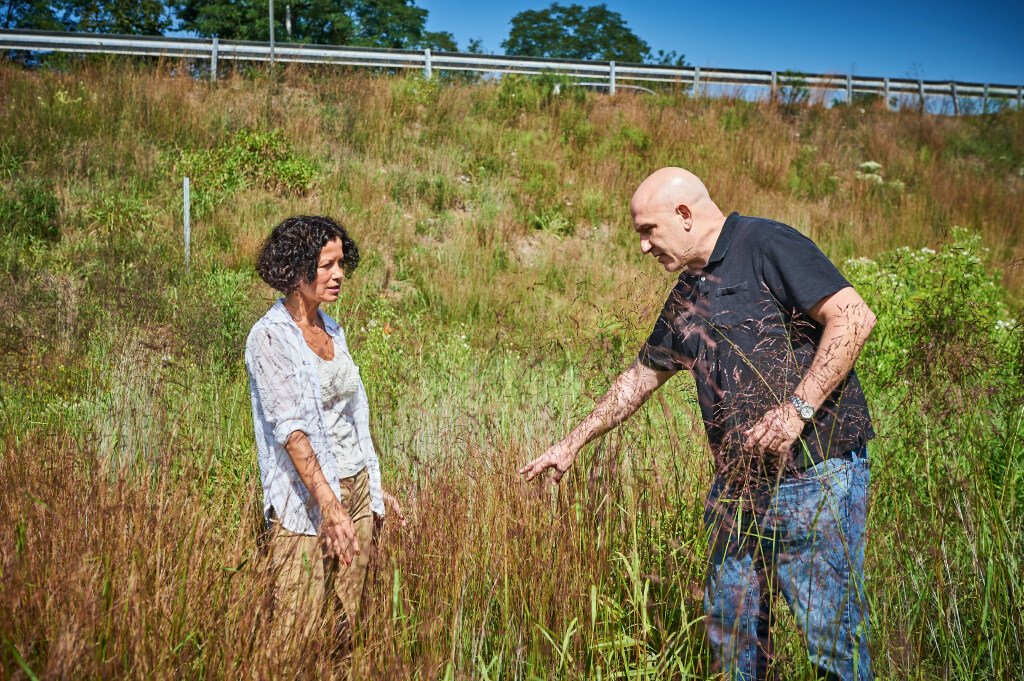acespicoli
Well-known member
Homemade Potting Media
Many cost conscious home gardeners and do-it-yourselfers are often looking for cheaper ways of growing plants for home and garden use. One way to achieve this may be by making homemade potting media.
Save for later Print
- Share
Updated:
March 14, 2023
Skip to the end of the images gallery
Skip to the beginning of the images gallery
Many cost-conscious home gardeners and do-it-yourselfers are often looking for cheaper ways of growing plants for home and garden use. One way to achieve this may be by making homemade potting media rather than purchasing pre-made materials at garden centers and home supply stores. Although purchasing the base ingredients and developing your own mix may not result in a cheaper mix, it does offer the opportunity to be creative and to modify mixes for specific goals or plants that you feel would make a media better for your situation. The following information will provide you with a basic understanding of potting media ingredients and steps for making homemade media from scratch.
Potting media, which has a coarser texture than garden soil, is commonly used in container gardens and in trays for sowing seeds. Ingredients recommended for potting media have changed over the years as research conducted by professional horticulturists has identified components that are beneficial for sowing seeds and plant growth. Before the mid-1900s, soil-based potting media was commonly used; however, peat-based soilless mixes have become more popular in recent years. Many ingredients are now available to gardeners who choose to create homemade potting media instead of buying one from a retailer.
Media Ingredients
Either soil-based or peat-based potting media can be made at home by combining individual ingredients.Recipes given here are measured in gallons for primary ingredients and in teaspoons and tablespoons or ounces and grams for smaller ingredients. Primary ingredients used for both soil-based and peat-based media are discussed below.
- Sphagnum peat moss has a coarse texture and contributes to good aeration yet provides the water-holding capacity to prevent soil from drying too quickly. However, adding too much sphagnum peat can restrict soil drainage by holding too much water. Sphagnum peat moss can be difficult to wet and should be moistened prior to mixing in other ingredients. Sphagnum peat moss is a limited resource that can be replaced with compost if so desired.
- Coarse, sharp, or builder sand, often used in construction, is a primary ingredient in potting media. Like peat moss, sand improves drainage and aeration, but does not improve water-holding capacity. Too much sand will make containers too heavy to move. Sand should not be mixed with a clay-based soil.
- Perlite can be used in both peat-based and soil-based potting media in place of sand. Perlite is expanded volcanic rock manufactured when heated to 1,800°F. Like sand, perlite provides great drainage, but is lighter in weight and holds more air. Although more expensive than sand, the advantages may outweigh the additional cost. Disadvantages of perlite include: 1) a tendency to float to the top of the medium when watered; 2) an inability to hold or retain water; and 3) a need to be moistened before it is mixed into other ingredients to reduce dust, which is harmful if inhaled.
- Vermiculite is often used instead of perlite. Vermiculite is clay belonging to the mica family and is naturally found in laminated flakes. It expands when folds of vermiculite can hold water, nutrients, and air, unlike perlite. Only horticultural grades, sold at garden centers, are recommended. Vermiculite can easily compact, which reduces its ability to hold water and air.
Making Soil-based Potting Media
The following is a basic recipe for soil-based potting media. In this recipe, garden loam soil, coarse construction sand, and sphagnum peat moss are combined together in equal parts by volume:- Start with one gallon of sterilized loam soil, commonly called garden soil and sold at garden centers, and pour it into a clean, empty bushel basket. Sterilized loam soil is worth the cost to avoid disease, insect, and weed problems that may exist in unsterilized soil. Soil taken directly from the garden may be contaminated with these pests, causing possible future problems such as dead, deformed, or stunted seedlings. Weeds in garden soil generally grow vigorously and crowd out desired seedlings by competing for nutrients, water, air, and light.
- Add one gallon of moist, coarse sphagnum peat moss, followed by one gallon of coarse sand, perlite, or vermiculite.
- Adjust the texture of the medium to create a loose, well-drained mixture. Sand feels gritty and clay feels sticky. If the potting soil feels too sandy, more peat moss should be added. If the potting soil feels too sticky, extra sand and peat moss should be added. Adjust the texture by adding small portions of sand and/or peat moss until you are satisfied with the texture.
Making Soilless or Peat-based Potting Media
Soilless mixes or peat-based potting media do not contain any soil, but generally consist of peat moss combined with horticultural grades of vermiculite and/ or perlite and added fertilizer. Peat-based media are useful for seed germination because they are relatively sterile, light in texture and weight, and uniform. The light texture enables seeds to readily germinate and emerge, allows tender roots to grow, and makes transplanting seedlings easier.In general, standard media recipes are created based on the types of plants being grown (ex. bedding plants, potted plants, or for seed germination). A standard recipe for a homemade soilless mix consists of half sphagnum peat moss and half perlite or vermiculite. To mix ½ bushel basket or four gallons of media:
- Start by pouring two gallons of peat moss into the bushel basket.
- Add two gallons of either perlite or vermiculite and mix thoroughly.
- Moisten the mix before using it in pots or flats.
Adding Ground Limestone and Fertilizer to Soil and Soilless Potting Media
Small amounts of ground limestone and fertilizer will need to be added to the media. These ingredients can be blended together in a separate container and then added to the bushel basket. Fertilizer will supply nutrients; however, the correct media pH must be maintained so these nutrients can be available for plant roots to absorb. The range in which all nutrients are available to most plants is between 6.0 (slightly acidic) and 7.0.Based on the length of time plants will be held in containers, it may or may not be necessary to add supplemental fertilizers to soil-based media. Clay or mineral content in garden soil provides cation exchange capacity (CEC) for nutrient retention and water-holding capabilities. Therefore, soil-based media generally provides enough fertility compared to soilless media. When making soil-based mixes, the pH will need to be adjusted according to soil test results. Soil test kits are available for purchase from your county extension office or garden center. (Refer to the website to contact your local county extension office.)
Although soil-based potting media may not initially require fertilizer in the mix, additional nutrients are usually helpful for plants that will remain in the same container for several years. A slow-release complete fertilizer (e.g., Osmocote) can be added to both soil-based and soilless potting media at rates recommended on the fertilizer label. Slow-release fertilizers will assure that nutrients are available for your plants through the coming months.
Whether soil-based or peat-based, media often has a pH that is too low (generally below 6.0) and should be adjusted. Adding ground calcitic limestone or agricultural lime raises media pH and contains calcium, which strengthens cell walls. Dolomitic limestone, sometimes used instead of calcitic limestone, also raises media pH and supplies magnesium as well as calcium. Four level tablespoons of limestone (about 2 ounces or 57 grams) can be added to the bushel basket. Soilless or peat-based media often require the pH to be adjusted upward (to between 6.0 and 7.0) and buffering to prevent rapid drops in pH while the plant is growing. One way to do this is to apply an alkaline fertilizer. Two teaspoons (about ½ ounce or 14.2 grams) of potassium nitrate (15-0-15) and the same quantity of calcium nitrate (15.5-0-0) can be added to supply nitrogen and potassium. To supply phosphorus, 2 level tablespoons (about an ounce or 28.4 grams) of 20% superphosphate (0-20-0) should be added. Alternatively, a slow-release fertilizer and limestone will achieve the same effect.
After fertilizer and limestone are combined and blended with the primary ingredients, the media should be sifted through a piece of ½-inch wire mesh screen called hardware cloth to break any large clumps into fine pieces. Media used to germinate seeds should be sifted through a ¼ inch hardware cloth to a finer texture. Lastly, don't forget to moisten the media before sowing or planting begins. After the media has been mixed, the excess media should be stored in a watertight container such as a plastic trashcan.
Now that you have a better knowledge of the basic components and a recipe for making homemade media, you can adjust and change your mix as you see fit for your needs and situations. Keep in mind that not all bulk materials are created equal. If you choose to use a locally available source of compost or other alternative materials in your mix, you should then be aware of their nutrient contents and cleanliness. Both factors will affect the success of your plants, and experimenting may result in media you consider better than commercially available media, or it may result in poor plant health and death. As the mixer and designer, you are also the one responsible for the results. Good luck and good planting.
Prepared by, Kathleen M. Kelley, assistant professor of consumer horticulture, James C. Sellmer, associate professor of ornamental horticulture, and Phyllis Lamont, former consumer horticulture center library coordinator

Homemade Potting Media
Many cost conscious home gardeners and do-it-yourselfers are often looking for cheaper ways of growing plants for home and garden use. One way to achieve this may be by making homemade potting media.
Remember put two inches of builder sand as the fungus gnat cap layer on top to prevent those nasty vermin
There use to be online, maybe it still exists a extension office with amazin old organix mix recipes
if anyone find such please remember to share it here

Last edited:















